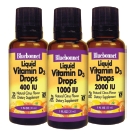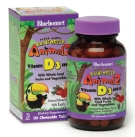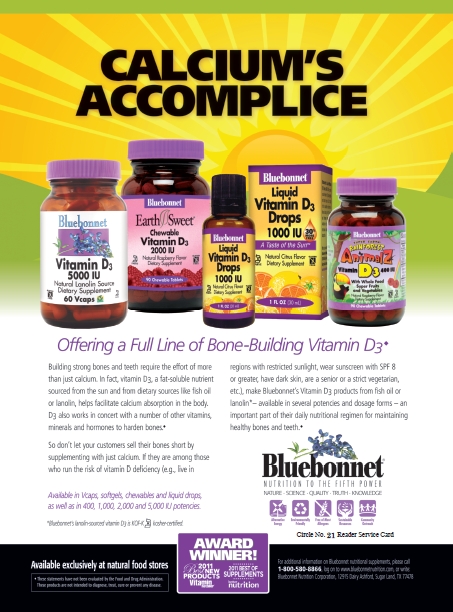1. What is the importance of vitamin D in the body?
Vitamin D is a fat-soluble nutrient that requires conversion in the liver and kidneys to form the physiologically active form of vitamin D known as calcitriol. Active vitamin D functions as a steroid hormone in the body, augmenting calcium and phosphorus absorption in the kidneys, which helps to form and maintain healthy bones and teeth. The principal physiological function of vitamin D is to maintain normal blood levels of both calcium and phosphorus, as well as promote bone mineralization
2. What is the difference between vitamin D2 (ergocalciferol) and D3 (cholecalciferol)?
 There are two forms of vitamin D: D2 and D3. Vitamin D2 (ergocalciferol) is found in mushrooms, yeast and other plants that have been exposed to ultraviolet light, while vitamin D3 (cholecalciferol) is a fat-soluble vitamin found in food or sheep’s wool (lanolin) and is also made by the body from cholesterol in a multi-step process that is activated by sunlight. Vitamin D3 has actually been reported to be more bioavailable than vitamin D2. In fact, in a recent study, vitamin D3 was three times more potent in increasing stored vitamin D content in the body than D2, as well as being more potent than D2 in raising circulating vitamin D levels in the blood by 87% after supplementation. Although vitamin D3 is the superior form of vitamin D in the body, for a true vegan/vegetarian formula, vitamin D2 must be utilized.
There are two forms of vitamin D: D2 and D3. Vitamin D2 (ergocalciferol) is found in mushrooms, yeast and other plants that have been exposed to ultraviolet light, while vitamin D3 (cholecalciferol) is a fat-soluble vitamin found in food or sheep’s wool (lanolin) and is also made by the body from cholesterol in a multi-step process that is activated by sunlight. Vitamin D3 has actually been reported to be more bioavailable than vitamin D2. In fact, in a recent study, vitamin D3 was three times more potent in increasing stored vitamin D content in the body than D2, as well as being more potent than D2 in raising circulating vitamin D levels in the blood by 87% after supplementation. Although vitamin D3 is the superior form of vitamin D in the body, for a true vegan/vegetarian formula, vitamin D2 must be utilized.
3. Which dosage form (e.g., softgels, liquids, chewables, etc.) is best suited for consumers?
Supplements today come in a variety of dosage forms, including vitamin D3. Since vitamin D3 from fish oil is fat-soluble, it is typically best to consume this source of vitamin D3 in a softgel whereby the nutrient is surrounded by a lipid (fat) matrix allowing for more efficient delivery into the small intestine and subsequent absorption into the body. However, fish is one of the top eight food allergens in the world; therefore, lanolin-based vitamin D3 would be preferable if your customer is allergic to fish, suffers from GI upset when taking fish oil or has fat malabsorption issues. Lanolin-based vitamin D3 is the only source of vitamin D3 that c an be kosher-certified and is often found in vegetarian capsules, chewables and liquids.
an be kosher-certified and is often found in vegetarian capsules, chewables and liquids.
Liquid and chewable vitamin D formulas offer flavor, ease of administration, increased compliance and most importantly, digestibility. With a liquid and chewable formula, the amount of time it takes for this nutrient to go from the stomach to the small intestine for absorption is miniscule. Capsules and tablets can take up to 30 to 45 minutes to break down, which is the disintegration/dissolution time set by the U.S. Pharmacopeia.
4. There is ample information on vitamin D for bone health in the literature, but what about heart health; especially since cardiovascular disease is the leading cause of death in the U.S.?
In addition to the importance of vitamin D for bone health, in 2001 researchers from the University of Warwick in the UK performed the first-ever systematic review and meta-analysis looking at the  association between blood levels of vitamin D and cardiovascular disease (CVD). Twenty-eight studies giving data on 99,745 participants across a variety of ethnic groups with both men and women were included in this meta-analysis, published in the journal Maturitas. Although the potential mechanism of action on how vitamin D works to support cardiovascular health is not fully understood, one theory is that by helping increase calcium absorption into the bone, vitamin D reduces the amount of calcium in the blood. Excess calcium in the blood can cause calcification in the walls of blood vessels resulting in hardening of the arteries (which can also impact blood pressure). Proving once again that vitamin D is calcium’s accomplice for good health.
association between blood levels of vitamin D and cardiovascular disease (CVD). Twenty-eight studies giving data on 99,745 participants across a variety of ethnic groups with both men and women were included in this meta-analysis, published in the journal Maturitas. Although the potential mechanism of action on how vitamin D works to support cardiovascular health is not fully understood, one theory is that by helping increase calcium absorption into the bone, vitamin D reduces the amount of calcium in the blood. Excess calcium in the blood can cause calcification in the walls of blood vessels resulting in hardening of the arteries (which can also impact blood pressure). Proving once again that vitamin D is calcium’s accomplice for good health.
5. Who would most benefit from vitamin D supplementation other than the elderly?
Nearly 70% of Americans fail to meet vitamin D recommendations. In fact, less than 10% of adults 50+ get enough vitamin D, according to the recent 2010 Dietary Guidelines Advisory Committee Report. Vitamin D deficiency is more common in individuals who live in regions where there is restricted  sunlight exposure (north of 42 degrees latitude) or a high level of atmospheric pollution. Children, strict vegetarians, dark-skinned people, individuals who constantly wear sunscreen and seniors who are immobile or primarily stay indoors are particularly vulnerable. Recent research findings have shown that most American children are not getting enough vitamin D. In fact, Caucasian children living in the northern U.S. only achieved the minimal daily dose of vitamin D in the summer months and only if they did not wear sunscreen. The results of this study challenge antiquated conclusions by the American Academy of Dermatology that people make enough vitamin D3 (at least 1000 IU/day) through casual everyday exposure to sunlight. In reality, American children are not getting enough sun exposure to meet their minimum daily vitamin D requirements, which is why Bluebonnet’s Super Earth® Rainforest Animalz® Vitamin D Chewables are a must for kids.
sunlight exposure (north of 42 degrees latitude) or a high level of atmospheric pollution. Children, strict vegetarians, dark-skinned people, individuals who constantly wear sunscreen and seniors who are immobile or primarily stay indoors are particularly vulnerable. Recent research findings have shown that most American children are not getting enough vitamin D. In fact, Caucasian children living in the northern U.S. only achieved the minimal daily dose of vitamin D in the summer months and only if they did not wear sunscreen. The results of this study challenge antiquated conclusions by the American Academy of Dermatology that people make enough vitamin D3 (at least 1000 IU/day) through casual everyday exposure to sunlight. In reality, American children are not getting enough sun exposure to meet their minimum daily vitamin D requirements, which is why Bluebonnet’s Super Earth® Rainforest Animalz® Vitamin D Chewables are a must for kids.

Trisha Sugarek holds a Master’s of Science in Nutrition from Texas Woman’s University and also a Bachelor’s of Science Degree in Nutrition and Foods from Texas State University. Ms. Sugarek is currently the Director of Research & Development as well as the National Educator at Bluebonnet Nutrition where she investigates new ingredients, directs the launch of new products, and provides industry training on numerous subjects as they relate to the connection between nutrition and health. She is a frequent editorial contributor and lecturer on the benefits surrounding the responsible use of supplements.
References
Bikle, D. D. (2010). Vitamin D: Newly discovered actions require reconsideration
of physiologic requirements. Trends in Endocrinology and Metabolism, 21,
375- 384.
Dietary Reference Intakes for Calcium and Vitamin D. Institute of Medicine of the National Academies.
Washington, DC: National Academies Press; 2010.
Heaney, R. P., Recker, R. R., Grote, J., Horst, R. L.., & Armas, L. A. (2010). Vitamin
D3 Is More Potent Than Vitamin D2 in Humans. The Journal of Clinical Endocrinology & Metabolism,
doi:10.1210/jc.2010-2230.
Parker, J., Hashmi, O., Dutton, D., Mavrodaris, A., Stranges, S., Kandala, N. B., Franco, O. H. (2010).
Levels of vitamin D and cardiometabolic disorders: Systematic review and meta-analysis. Maturitas,
65, 225-236.
Published in WholeFoods Magazine, February 2012










